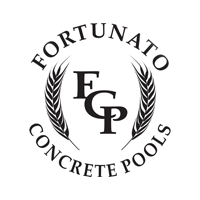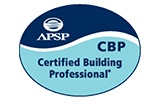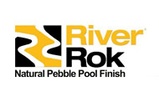Frequently Asked Questions
1) What is scale?
“Scale is the precipitate that forms on surfaces in contact with water when the calcium hardness, pH, or total alkalinity levels are too high. Results from chemically unbalanced pool and spa water. Scale may appear as grey, white, or dark streaks on the plaster, fiberglass or vinyl. It may also appear as a hard crust around the tile.”
IPSSA Basic Training Manual 2006, pg 188, Glossary
2) How long do I have to wait to turn my heater on?
“DO NOT turn on pool heater until there is no plaster dust in the pool.”
National Plasterers Council, NPC Start Up Card, September 2012 edition.
Turning the pool heater on prematurely can damage the heat exchanger. Plaster dust is usually gone in approximately 5-10 days.
3) How long do I have to wait to add salt to my pool?
“No salt should be added for 28 days.” But Fortunato Pools will handle the salt for you.
National Plasterers Council, NPC Start Up Card, September 2012 edition
4) My pool has been plastered – can I swim?
It is recommended that you do not swim in the pool until the water is properly balanced and sanitized.” – National Plasterers Council, NPC Start Up Card, September 2012 edition
5) Are pool finishes waterproof?
“Cementitious surface coatings are actually semi-permeable membranes. They allow small amounts of moisture to permeate through and into the substrate, over time. However, many plaster applications that are properly placed and satisfactorily finished are improperly diagnosed or deemed wrongfully to be faulty by people who believe the coating is supposed to be ‘waterproof’ and not watertight. In fact, cementitious surface coatings are not intended to completely stop moisture penetration.”
National Plasterers Council Technical Manual, Section 1.1 Watertightness
Pool finishes are not waterproof. When needed pools are waterproofed before the pool finish is applied.
6) What is curing?
“The term curing is used in reference to the maintenance of a favorable environment for the continuation of these chemical reactions; that is, the retention of moisture within or supplying moisture to the concrete and protection against extremes of temperature. It is through early curing that the internal structure of the plaster is built up to provide strength and water tightness.”
“Curing is typically done by immersing the cementitious coating in water as soon as possible after final set. The hydration of the cementitious compounds will continue underwater.”
“By immersion or “ponding” curing of a swimming pool’s cementitious surface, the hydration process is allowed to proceed without the accelerated loss of moisture from evaporation, wind, and other factors. This “ponding” curing will also greatly reduce the tendency of the surface to develop shrinkage cracking.”
National Plasterers Council Technical Bulletin Number 2, January 2010
7) I just signed my contract for a new swimming pool, what next?
You can download a full copy of “What To Expect When Building Your Concrete Swimming Pool” by clicking here for a general guideline to building your concrete swimming pool
You can also download a full copy of “What To Expect When Renovating Your Concrete Swimming Pool” by click here for a general guideline to renovating your conrete swimming pool








